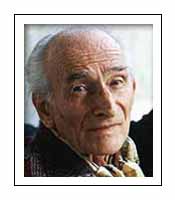
Balthus (1908 – 2001)
Polish-French modern artist Balthus (Balthasar Klossowski de Rola) was born in Paris. In 1926 Balthus visited Florence, where he copied many frescos by the Renaissance master Piero della Francesca. From 1930 to 1931 Balthus served in the French army in Morocco. In 1933 he moved to Paris, taking a studio in the Rue de Furstemberg.
Later he would move to another studio at the nearby Cour de Rohan. Balthus showed no interest in modernist styles such as Cubism. His paintings were realistic but introverted, in the manner of the second generation of Surrealist painters such as Salvador Dalí, who often used realistic techniques to depict psychological motifs or dream images.
Although his technique and compositions were inspired by pre-Renaissance painters, there also are eerie intimations of contemporary surrealists like de Chirico. Painting the figure at a time when figurative art was largely ignored, he is widely recognised as an important 20th-century artist. Many of his paintings show young girls in an erotic context. Balthus insisted that his work was not erotic but that it recognized the discomforting facts of children’s sexuality. In 2013, Balthus’s paintings of adolescent girls were described by Roberta Smith in The New York Times as both “alluring and disturbing”.
His work has influenced several contemporary artists, notably Duane Michals[15] and Émile Chambon. He has also influenced the filmmaker Jacques Rivette of the French New Wave.
A List of important works of the Artist. Visit the gallery with large-size images, date, size, location and technical information.
References;
